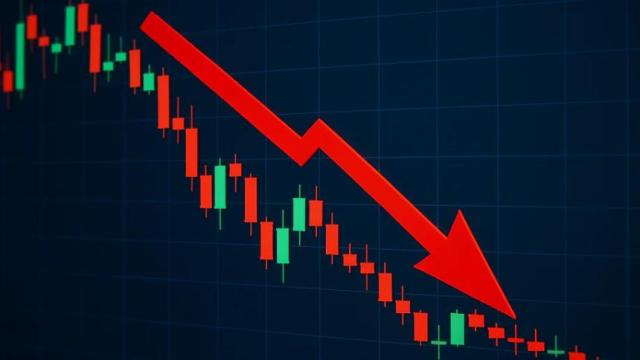
Friday's cryptocurrency market crash was largely driven by short-term technical factors and high leverage, not a reflection of long-term fundamental weakness.
The move, triggered by leverage risk, Longing bias and former US President Donald Trump's announcement of 100% tariffs on Chinese goods, coincided with thin liquidation .
- The crash came from a combination of technical factors: excessive leverage, Longing bias, and the tariff announcement at a time of low liquidation .
- About $20 billion liquidated in 24 hours, nearly 1.6 million traders affected; scale surpasses crises like FTX, Terra/ LUNA.
- There are no long-term negative implications, the analyst asserts; the market is shedding leverage to accumulate for the next bull cycle.
What caused Friday's price crash?
The main reasons come from excessive leverage, Longing position bias and the shock of 100% tariff information with China announced by Mr. Donald Trump, according to The Kobeissi Letter.
Analysts at The Kobeissi Letter highlighted a strong Longing-skewed market: $16.7 billion in Longing positions were liquidated, compared to $2.5 billion in Short, a ratio of nearly 7:1. The combination of high leverage risk with an unexpected macro push created a widespread domino effect.
Trump’s announcement came around 17:00 UTC on Friday, or around 00:00 Saturday morning (GMT+7), when liquidation was thin and volatility was amplified. This caused prices to fall rapidly, triggering further chain liquidations.
“We believe the crash was a combination of sudden technical factors. It does not have long-term negative fundamental implications. A technical correction is due; we believe a trade deal will be reached and cryptocurrencies remain strong. We remain bullish.”
– The Kobeissi Letter, market analysis group; quoted from a post on X; accessed October 11, 2025 (GMT+7); source: https://x.com/KobeissiLetter/status/1977005754289996073
Why does the timing of tariff announcements cause volatility to spike?
Because it coincides with thin liquidation time frames, large orders can easily pull down prices, trigger automatic liquidation chain , and spread panic.
Around 17:00 UTC Friday (00:00 Saturday, GMT+7) is usually the time when the weekend is approaching, market making activity is thinner. When the “100% tax” news comes out, the market lacks Order Book depth, causing exaggerated volatility.
As prices fall rapidly, leveraged positions are called for margin and liquidated, creating a domino effect. In a strong Longing bias, the forced selling pressure is even greater.
Is this a sign of long-term market weakness?
No, The Kobeissi Letter analysts say; this is a belated technical correction, not a reflection of long-term fundamental deterioration.
The “bullish” message emphasizes the event of deleveraging, helping to restructure positions. As leverage risks cool, valuations have the opportunity to cling to more fundamental factors, reducing the noise caused by overloaded positions.
Cryptocurrency market history shows that technical shocks are often followed by periods of stability and accumulation, if not accompanied by systemic fundamental shocks.
24-hour losses: how much did liquidation and Capital evaporate?
Around $20 billion was liquidated in 24 hours, shaking nearly 1.6 million traders; the scale surpasses shockers like FTX and Terra/LUNA.
The Total3 index (market Capital excluding Bitcoin and Ethereum) fell from $1.15 trillion to about $766 billion in just one day, according to TradingView data. This shows the level of loss is concentrated in the altcoin group, where leverage is often thicker.
The nearly 7:1 difference in Longing to Short liquidations suggests that position bias amplified the magnitude and speed of the crash.
Short-term outlook: volatility to continue?
Expect price volatility to remain high in the short term as the market digests the tariff news and macro impact, according to Swan Bitcoin CEO Cory Klippsten.
He believes the decline will shake off leverage and “weak hands”, creating conditions for the market to consolidate before gaining momentum for a new rally. This view is consistent with the “deleverage then accumulation” model often seen after technical shocks.
However, volatility depends on the direction of trade negotiations and general risk sentiment. Investors need to be flexible in managing risks during the information noise period.
“The sell-off will shake out leveraged traders and weak hands, and then consolidate to fuel the rally to new highs.”
– Cory Klippsten, CEO Swan Bitcoin; replied to Cointelegraph; accessed October 11, 2025 (GMT+7); source: Cointelegraph
What should investors watch for after the crash?
Prioritize monitoring of system leverage, Longing/ Short liquidation spreads and US-China trade, tariff news milestones.
When funding rates and position ratios are tilted in one direction, the risk of a squeeze increases. In addition, thin liquidation hours (weekends, early morning GMT+7) are prone to irrational fluctuations. Monitoring Total3 helps identify the health of altcoins, a group vulnerable to high leverage.
Unexpected policy news can change short-term expectations. Investors should be prepared for multiple scenarios rather than just revolving around a single “thesis”.
What are the risk management lessons from this crash?
Reducing leverage, allocating positions properly and standardizing stop-loss points are crucial in a volatile environment.
The liquidation ratio of Longing close to 7:1 to Short reflects systemic risk when herd mentality is tilted in one direction. Moderate leverage, controlling position size and diversifying assets help increase resilience to shocks.
Avoid trading thin liquidation timeframes if you don't have a clear edge. Focus on process, trading discipline and emotional management.
Key numbers in the crash
Below is a summary of the key data from the sources cited in the article.
| Index | Value | Source |
|---|---|---|
| 24-hour liquidation | ≈ 20 billion USD | Cointelegraph |
| Affected traders | Nearly 1.6 million | Cointelegraph |
| Longing liquidation | 16.7 billion USD | The Kobeissi Letter |
| Short liquidation | 2.5 billion USD | The Kobeissi Letter |
| Longing: Short ratio liquidated | Nearly 7:1 | The Kobeissi Letter |
| Total3 before the crash | ≈ 1.15 trillion USD | TradingView |
| Total3 after the crash | ≈ 766 billion USD | TradingView |
Frequently Asked Questions
Why did the cryptocurrency market crash so quickly in 24 hours?
Due to excessive leverage, Longing position bias and Donald Trump's 100% tariff announcement coming at a time of thin liquidation (around 00:00 Saturday morning, GMT+7), according to The Kobeissi Letter.
How does this liquidation scale compare to FTX or Terra/LUNA?
Around $20 billion was liquidated and nearly 1.6 million traders were affected in 24 hours, a scale exceeding events like FTX and Terra/LUNA, according to the reported summaries.
Is this a signal that the market is entering a long-term downtrend?
Not necessarily. The Kobeissi Letter believes this is a technical correction, not implying a weakening of the long-term foundation; they maintain an optimistic view.
Why is the timing of information disclosure important?
Information falling into thin liquidation hours amplifies fluctuations, chain liquidation orders occur faster, pushing prices down sharply.
What should I do in the short term?
Expect high volatility as the market de-levers and consolidates; disciplined risk management and limited leverage are needed, according to Cory Klippsten (Swan Bitcoin).








